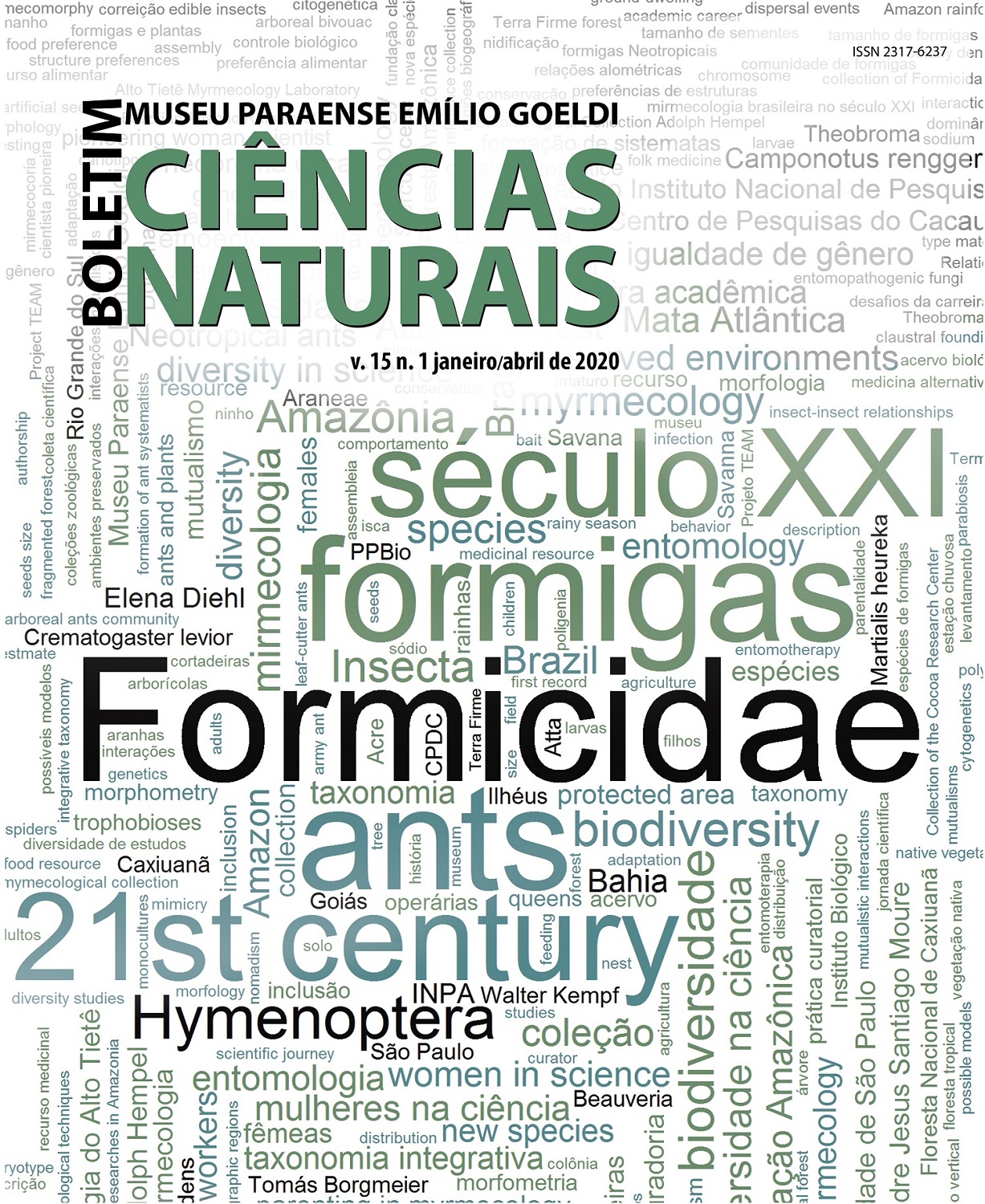First record of an arboreal bivouac for the army ant species Eciton rapax Smith, 1855 (Formicidae: Dorylinae)
DOI:
https://doi.org/10.46357/bcnaturais.v15i1.289Keywords:
Rainy season, Nesting, NomadismAbstract
The army ant Eciton rapax still little known in your natural history. The nesting habits of E. rapax are still poorly studied, being an important gap for understanding the ecology of this species. Our study recorded and described E. rapax nesting sites. The study was carried out in a region of Amazon primary forest, in dry land areas, in Bragança City, in the state of Pará, Brazil. Eciton rapax foraging columns were found and followed to their nesting site between July 2018 and January 2020. Five bivouacs were found, which have been described and the areas recorded at a GPS point. Four bivouacs were underground, under fallen logs, holes left by medium-sized mammals or between aerial tree roots. A bivouac was located in the hollow part of a tree, approximately 3 meters high. Our data show that, in addition to underground nesting habits already described in the literature, E. rapax also nest outside the subsoil, in cavities located in the upper parts of the trees, in a safe place and free from the floods of rainy seasons.
Downloads
Additional Files
Published
Issue
Section
License
Publication means fully assigning and transferring all copyrights of the manuscript to the journal. The Liability Statement and
Assignment of Copyrights will be enclosed with the notice of acceptance. All the authors must sign the document and return it to the journal.








